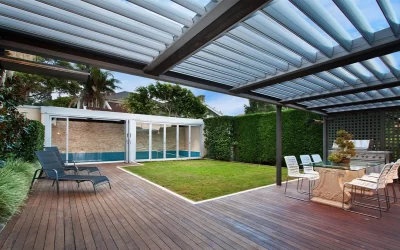Composite Materials in the Civil and Infrastructure Industry
At Composites Fibreglass International, we provide composite materials to the civil and infrastructure industries. We start off by listening to you to learn what the key requirements are for your product and how they need to fit into the required building codes and regulations firstly.
Once individuals understand this, we can then direct you to our specific set of products in resins, fibres and cores if required to allow you to fabricate your required structure. If your work requires greater testing or development, we can again support you with industry experts or test facilities etc.
What are composite materials in civil engineering?
A composite is a combined material formed from a mixture of two or more materials that differ in composition or appearances, which are eventually secured together, but still retain their identities and properties. The outcome of this composition is that new formed materials have condescending properties over the individual components. An example related to a material is Fibreglass Reinforced Polymer (FRP), which is a very known composite used for a number of things ranging from boating and cars, from space and aeronautics. Here at Composites Fibreglass International we can supply a composite material like FRP.
Composite engineering, which basically incorporates the use of composite materials in engineering, is slowly but surely making incursions into the civil engineering and infrastructure industry. In spite of the fact that composites are generally more overpriced in comparison to normal construction materials, they have the advantage of being stronger, lightweight and more corrosion resistant. The fibre reinforcement provides good damping characteristics and high resistance to fatigue.
The Benefits of Composite Materials in the Infrastructure Industry
Composite Fibreglass International provides the proper supply of composite materials used in construction due to the many benefits over the product being a traditional building material. With low weight and the high strength of composite, it makes it a captivating material for construction. Using these two characteristics contributes to a high determined strength, which easily means each weight of the composite can handle more stress and pressure. It contributes to a lower cost of construction, as much less materials can be used without sacrificing structural stability.
Composites are corrosion resistant, which means it’s impossible for them to rust or corrode like metal alloys. These composite materials can be used in destructive surroundings and environments such as saltwater, piping and ductwork. Furthermore, composites are also water resistant which technically means that they don’t rot or swell up like wood does or even rust metal. The flexibility of composite materials also allows single parts to replace complex assembly units made of materials such as steel, wood and aluminium.
Examples of Composite Materials
A composite is made of materials that complete each other’s shortcomings. For example, a material that abstracts well could be combined with a material that stretches well to form a compressible and stretchable composite.
At Composite Fibreglass International, fibreglass is such a key component that we sell to our customers. Fibreglass is simply plastic that is combined with glass fibres. It is likely that your bathtubs, doors, decking, and window frames all take advantage of fibreglass in some way. Composite Fibreglass International have been involved in many projects locally and globally and our suppliers have a vast experience in this area.
Other composite materials also include:
Mud Brick
Mud brick came known to individuals that straw was resistant to stretching and that dried mud copes well with compression.
Wood
Trees have been around for thousands of years and have been known for one of the best composite materials within today’s civil and infrastructure industries. Wood is made of long fibres of cellulose that are held together by a weaker substance called lignin. The organisation of the cellulose within the wood is what makes some types of wood (like ironwood) stronger than others. Engineered wood, such as plywood, takes advantage of weaker woods by cutting them into thin pieces and then glueing them together. This gives plywood the flexibility and the softer qualities that allow for nailing into plywood.
Absorbent Concrete
Absorbent Concrete works by allowing water to pass it way through large pebbles and into another layer of rubble. This concrete always proves to be useful in dealing with situations like flooding once implemented on a large scale, particularly in the civil and infrastructure industries.
Translucent Concrete
This concrete is a primary example of a composite material because of the combination of small rocks and cement that it holds. When optic fibres, similar to those found in fibreglass, are added to concrete, you get translucent concrete. The look and feel of the concrete can vary depending on the ratio of cement to optic fibres.
Carbon Fibre
Carbon Fibre is combined with plastics into what is a carbon fibre reinforced polymer. These compounds are used in aeroplane wings, automobile body parts, and sports equipment. Benefits of carbon fibre include, but are not limited to, high stiffness and strength, lightness, corrosion resistance, and a low coefficient of thermal expansion meaning that it doesn’t expand or contract very well. These benefits make carbon fibre an ideal material to be used within the civil and infrastructure industries.
Pykrete
Ice and wood are adequately strong in their own ways but when combined together, they form a composite called Pykrete. Pykrete is a combination of ice and wood pulp that can be up to 14 times stronger than ice.
We carry specialised FST types of resins matched to regulation and code types along with fibres and FST grade cores engineered to standards applicable. Need help on Application? Composites Fibreglass International have you covered. We can match the right process to your build along with the ancillary requirements needed. Contact us now for composite material solutions.



